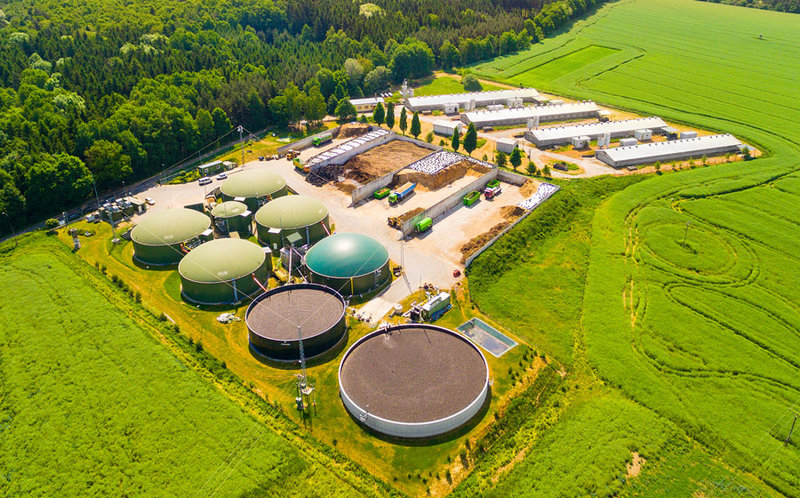Fuels
Backing biofuels:
will the shipping industry ever get on board?
Years after biofuels were first raised as an option for the marine industry, uptake remains incredibly limited. Will a new IMO agreement to cut greenhouse gas emissions by 50% in the shipping sector drive uptake, or will the industry continue to look the other way, asks Patrick Kingsland
Image courtesy of
In April 2018,
the International Maritime Organization (IMO) announced the world’s first full agreement on tackling climate change in the global shipping sector. Following a marathon two-week meeting involving representatives from more than 170 countries around the world, it was agreed that by 2050, greenhouse gas emissions will be cut by 50% compared with 2008 levels.
The announcement was made amid mounting pressure on the IMO, after international shipping was left out of the 2015 Paris Climate Agreement despite accounting for around 3% of global carbon dioxide emissions and increasing its emission levels by 77% between 1990 and 2015.
“The shipping industry is one of the largest emitters of greenhouse gases in the transport sector,” says Barry Fitzgerald, postdoctoral researcher at the Delft University of Technology.
But while news of the agreement was welcomed by industry associations, analysts say achieving its ambitious targets will not be possible without transitioning from heavy fuel oils (the main fuel used by deep sea vessels) to low and zero-carbon alternatives.
“The mandatory 50% reduction CO2 target set up by the IMO requires a change in fuels and maybe also in propulsion systems,” says Claus Felby, professor of biomass and bioenergy at the University of Copenhagen.
Stuart Rivers, CEO of Sailors’ Society.
Image courtesy of Sailors’ Society
The biofuel option
Some of the most promising renewable fuels currently available are biofuels such as biodiesel, bio-methane, bio-methanol and hydrogenated vegetable oil.
They are derived from biological waste produced in other areas of society such as agriculture, forestry and farming, or from dedicated biofuel crops. Depending on the type of biofuel used, analysts say they can achieve CO2 reductions of as much as 80-90%.
“As modern industry evolves to consider its effect on the environment, the potential uptake by the shipping industry of biofuels can serve to ensure its long-term sustainability,” says Fitzgerald.
A lot of biofuels are already compatible with current engine technology and could be used in existing infrastructure and vessels with little to no retrofitting.
“We don’t have to wait for fleet-renewal to start the transition,” says Sjors Geraedts, head of technology at GoodFuels. “Immediate greenhouse gas reductions of more than 80% can be achieved.”
The first phase of the Hambantota Port project was built through a $307m loan from the Export-Import Bank of China

Image courtesy of
Image courtesy of
Limited uptake
But years after biofuels were first raised as an option for the shipping industry, uptake remains incredibly limited. Less than 1% of the current fuel supply makes use of the fuel, with the few initiatives currently operational mostly involving inland or short-sea shipping.
“As of yet, there has not been large scale implementation of biofuels in the shipping industry,” Fitzgerald says.
The main problem remains the cost of biofuels, which are forced to compete with heavy fuel oils that have been used by the industry for decades in poorly regulated international waters.
Converting engines to process biofuels can also be a costly process, with “many companies unwilling to facilitate the conversion given the reliability of current engines running on heavy fuel oils,” Fitzgerald explains.
“Alternative and renewable fuels will always be more expensive than fossil fuels as long as there is no cost of CO2 emissions,” adds Felby.
As of yet, there has not been large scale implementation of biofuels in the shipping industry
Lack of supply infrastructure also poses a major problem. Before ships can use biofuels on a meaningful scale, an entirely new supply chain will need to be build, from choosing the right biomass feedstock and production methods, to ensuring biofuels can be transported and made available at ports around the world.
“Geographical location will affect the availability of viable biomass for the production of biofuels in addition to easy access to reliable biomass processing facilities,” says Fitzgerald. “Some biomass materials are susceptible to local weather conditions, which can lead to undesirable variances in the chemical concentration of biofuel derivatives.”
Major ethical concerns over land use have also hampered their uptake over the past decade. Concerns revolve around developing countries where using land for bio crops rather than edible food can aggravate existing food insecurity. Felling forests or turning grasslands into agricultural land can also undo the positive effects of biofuels by increasing greenhouse gas emissions.

Image courtesy of
Overcoming the barriers
Supporters of biofuels in marine shipping say that none of these challenges are insurmountable, however.
When it comes to non-sustainable land use, Felby says biofuels based on waste or residues from agriculture and forestry would not cause competition with food crops and should be favoured. The only challenge, he adds, “is that these biofuels are still in their early stage of commercial implementation and it will take years to expand these industries.”
But facilities for a number of so-called second generation biofuels manufactured from non-food biomass are already being developed.
“Most promising are those that take either solid (woody) biomass, or municipal solid waste and convert this to high quality low-sulphur fuels, through technologies such as pyrolysis, HTL, Hydrotreatment and Fischer–Tropsch,” says Geraedts.
Changes will take decades and a full switch from fossil fuels to renewables will take 30-50 years
On overcoming cost barriers, Fitzgerald recommends increased investment in research on biofuel production and using mandates and organisations such as the IMO to promote and incentivise the use of biodiesel.
“Increased investment is essential for the development of innovative and cost-effective technologies that can be incorporated with relative ease into existing shipping infrastructure,” he says.
But the return on such investments could take as long as 20-25 years, meaning investors used to immediate returns will need to dramatically change their mindsets from short-term gain to doing what is ethically right. That, says Felby, will require a “long haul” effort: “Changes will take decades and a full switch from fossil fuels to renewables will take 30-50 years, and that is only if both industry and government are committed.”